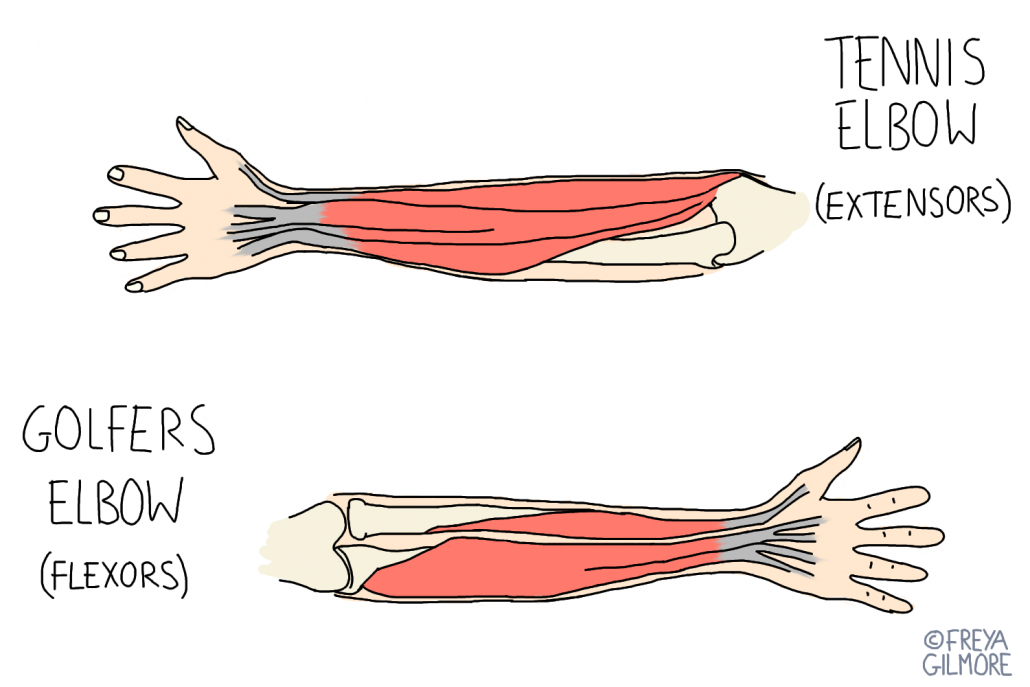Lateral epicondylitis is the technical name for tennis elbow. It is similar to medial epicondylitis: golfer’s elbow. Both are inflammation of the point where muscles attach to bone. For the former it is wrist extension (the tennis backhand motion) and for the latter it’s wrist flexion.

Symptoms of Epicondylitis
Pain usually comes on somewhat gradually, but may be initiated by an overstrain to the muscles in question. Over time, the point at the side of the elbow becomes more tender. It may also become warm or slightly swollen. These are signs of inflammation which may pass before the problem is actually resolved. Microtears to the soft tissues of the muscle and tendon can cause longer lasting pain, and about 1/5 people will continue to feel symptoms for a whole year.
As the condition progresses, the pain gets more intense and immediate with the aggravating activity. Initially pain will come on a few hours afterwards, but if it is allowed to progress, it can become immediate. This can be significant enough to prevent the activity at all.
Although pain is focused around the tendon, it can spread. If it follows the muscles of the forearm, it can extend as far as the hand.
Risk Factors for Golfers and Tennis Elbow
Epicondylitis is essentially an overuse injury. These are more likely in people who have suddenly increased their frequency or intensity of an activity. Picking up a brand new exercise can overload the body in the same way. It primarily affects people between the ages of 30 and 50.
Exercise can be a more subtle risk factor if it’s a smaller change that affects the tendon. Playing an aggravating sport with a new racket, in a more demanding environment, or even with a restrung racket could be enough to start the process. Changes to technique (whether intentional or not) can also demand more of the muscles. Be mindful of these possibilities for your case history.
Managing Tennis Elbow
A standard management strategy focuses on relaxing the irritated muscle and improving movement generally. Advice for reducing inflammation at home (such as using a cool compress) may be useful. This is most effective in the early stages and when most irritated. Do avoid over resting the arm though, as movement is important to keep the tissues healthy. A sling is not recommended routinely.
As the problem affects an area with poor blood supply (the tendon), it can be very slow to heal. Treatments and exercises to encourage maximum blood flow to the area can help to clear inflammation and heal the microtears.
If racket sports caused your injury, you might find that a thicker grip helps to ease the pressure on the wrist muscles. Wrapping an additional layer of grip tape around the handle may be appropriate. We estimate that only 1/20 cases are actually related to tennis. Physical hobbies, especially those that are done intensely and infrequently, are often related.
Click here to make an appointment in Alsager for your golfers or tennis elbow

